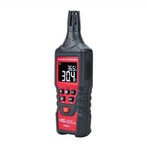What is a combination oscilloscope?
A combination oscilloscope is an oscilloscope that combines the capabilities and advantages of both an analog oscilloscope and a digital storage oscilloscope (DSO). When the combination oscilloscope is set up as a DSO, users can use it to perform automatic parameters, measurements, and store acquired waveforms to make hard copies; at the same time, it can have the infinite resolution of an analog oscilloscope and the familiar and trustworthy Waveform display, and when using a combination oscilloscope, you get the brightest display regardless of signal repetition rate.
Using a transformer algorithm in a flyback switching power supply always requires many more adjustments. Is there a more general method for calculating transformer parameters for flyback switching power supplies?
Although the design of the transformer is based on theoretical calculations, it still requires multiple trials and adjustments due to differences in magnetic cores, winding methods, etc. Generally, the primary inductance is calculated first, the core material and frame size are selected according to the output power, and then some parameters such as the core cross-sectional area are determined according to the manual. The single-ended design of the transformer is to reset the magnetic flux in the core.
What are the special requirements for starting a switching power supply at low temperatures (e.g. below -20°C)?
The key is the temperature range of the device selection. Such as capacitors, MOSFETs, diodes, etc.
Switching power supplies always have electromagnetic radiation and may be interfered by other electrical equipment. How can we avoid interference from other electrical appliances and effectively prevent the device from radiating outwards?
Since the switching power supply operates in a switching state of high voltage and large current, the electromagnetic compatibility issues caused by it are quite complicated. In terms of electromagnetic compatibility of the whole machine, there are mainly common impedance coupling, line-to-line coupling, electric field coupling, magnetic field coupling and electromagnetic wave coupling. The three elements of electromagnetic compatibility are: interference source, propagation path and interfered object. Common impedance coupling mainly means that the interference source and the interfered object have a common electrical impedance, and the interfering signal enters the interfered object through this impedance. Line-to-line coupling is mainly the mutual coupling of wires or PCB lines that generate interference voltages and interference currents due to parallel wiring. Electric field coupling is mainly due to the existence of potential difference and the coupling of the induced electric field to the disturbed object.






